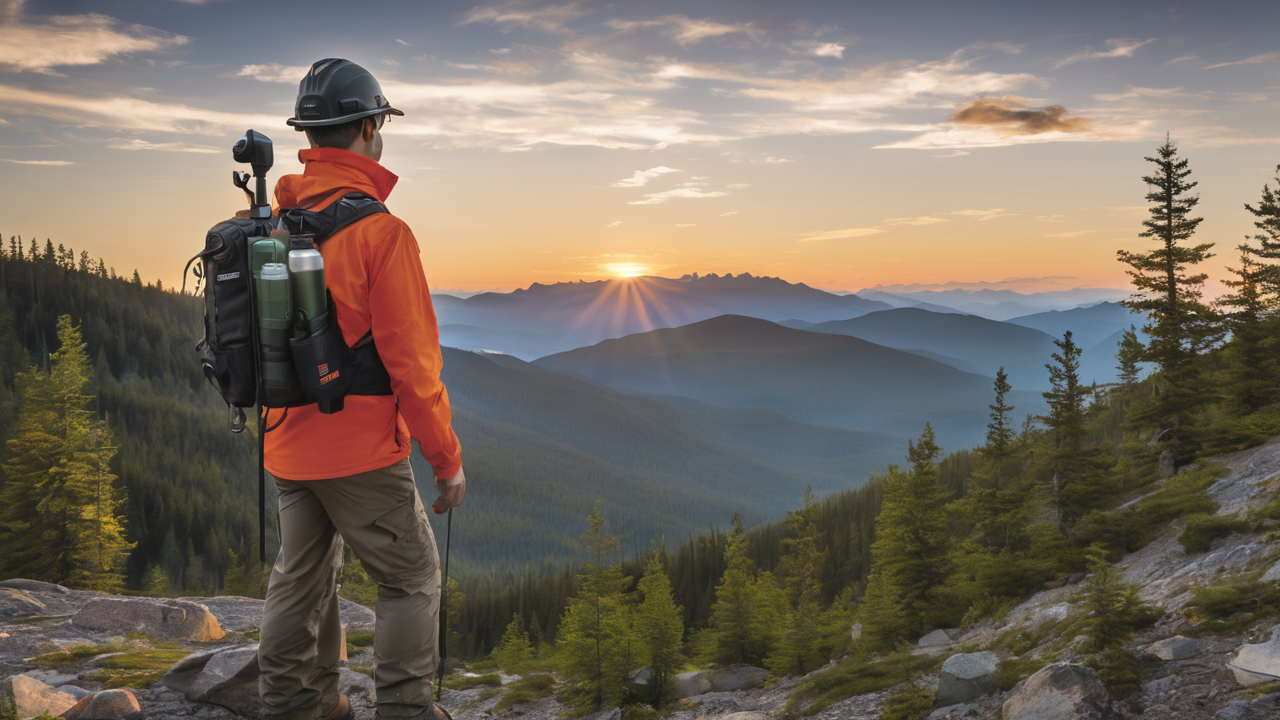Understanding the Basics of Walkie-Talkies
The History of Walkie-Talkie Phones
Walkie-talkies have come a long way since their inception. They were first used in World War II for military communication. These early devices were bulky and had limited range. Over time, they evolved into more compact and efficient tools. By the 1970s, walkie-talkies became popular for civilian use. They found their way into various industries and outdoor activities. Today's walkie-talkies are sleek, powerful, and packed with features. They combine the best of two-way radio technology with modern conveniences. This makes them ideal for outdoor enthusiasts and professionals alike.

Key Features of High-Quality Walkie-Talkies
When choosing a walkie-talkie, several key features are crucial:
- Range: Look for devices that offer long-range communication.
- Battery Life: Longer battery life is essential for extended outdoor use.
- Durability: Rugged construction to withstand harsh conditions.
- Water Resistance: Important for use in various weather conditions.
- Channel Options: Multiple channels allow for private conversations.
- Voice Activation: Hands-free operation for convenience.
- Emergency Features: SOS functions can be life-saving in critical situations.
These features ensure reliable communication in outdoor settings. They make walkie-talkies indispensable for hikers, campers, and adventure seekers.
The Difference Between Walkie-Talkies and Traditional Phones
Walkie-talkies and traditional phones serve different purposes. Walkie-talkies excel in areas with no cell coverage. They offer instant communication without dialing. Traditional phones rely on cellular networks. Walkie-talkies use radio frequencies, making them more reliable in remote areas. They also allow for group conversations easily. Phones offer more features like internet access and apps. But walkie-talkies are more durable and have longer battery life. For outdoor enthusiasts, walkie-talkies are often the better choice. They provide simple, reliable communication in challenging environments.
Expert Comparison: Top 5 Walkie-Talkies in the Market
Reviewing the Best Walkie-Talkie Phones for Hiking
For hikers, the best walkie-talkies combine range, durability, and lightweight design. Here are the top picks:

- Motorola T600: Offers excellent water resistance and floating design.
- Midland GXT1000VP4: Known for its long range and clear audio.
- BaoFeng UV-5R: Popular for its versatility and affordability.
- Cobra ACXT1035R FLT: Features a built-in flashlight and NOAA weather alerts.
- Kenwood TH-D74A: High-end option with GPS and APRS functionality.
Each model has unique strengths. The Motorola T600 is ideal for water-based activities. The Midland GXT1000VP4 excels in long-range communication. The BaoFeng UV-5R offers great value for money. Consider your specific needs when choosing.
Analyzing the Top Models for Adventure Seekers
Adventure seekers need robust, feature-rich walkie-talkies. Here's a closer look at the top models:
- Motorola T600: Perfect for water adventures with its IP67 rating.
- Midland GXT1000VP4: Offers 50 channels and a range up to 36 miles.
- BaoFeng UV-5R: Versatile with both UHF and VHF bands.
- Cobra ACXT1035R FLT: Great for night hikes with its built-in flashlight.
- Kenwood TH-D74A: Ideal for tech-savvy users with its advanced features.
Each model caters to different adventure styles. The Motorola T600 is best for water sports. The Midland GXT1000VP4 suits long-distance trekking. The BaoFeng UV-5R is great for budget-conscious adventurers. Choose based on your typical adventure scenarios.
How Durability and Battery Life Affect Your Outdoor Experience
Durability and battery life are crucial for a positive outdoor experience. A rugged walkie-talkie can withstand drops, water, and extreme temperatures. This reliability ensures communication in critical moments. Long battery life means less worry about power during extended trips. It allows you to focus on the adventure, not on charging devices. The Motorola T600 offers excellent durability with its rugged design. The Midland GXT1000VP4 boasts impressive battery life. Consider these factors when choosing your walkie-talkie. They can greatly enhance your outdoor experience and safety.
Real-World Applications: How Walkie-Talkies Enhance Outdoor Adventures
Enhancing Safety and Communication in Wilderness
Walkie-talkies play a crucial role in wilderness safety. They provide a lifeline when cell phones fail. In remote areas, they enable quick communication during emergencies. Hikers can alert others about potential dangers or call for help. They also allow groups to stay connected when split up. This is vital for coordinating meetups or sharing important information. Some models, like the Cobra ACXT1035R FLT, offer weather alerts. This feature helps users prepare for sudden weather changes. Overall, walkie-talkies significantly enhance safety in the wilderness.

Walkie-Talkies in Extreme Environments: Case Studies
Walkie-talkies have proven invaluable in extreme environments. In one case, a group of climbers in the Himalayas used Kenwood TH-D74A devices. The GPS feature helped them navigate through a sudden snowstorm. Another instance involved cave explorers using Motorola T600 units. The waterproof design allowed communication in flooded cave sections. During a desert expedition, the long-range Midland GXT1000VP4 kept a team connected across vast distances. These cases highlight the importance of choosing the right walkie-talkie for specific environments.
The Role of Walkie-Talkies in Group Hiking Excursions
In group hiking, walkie-talkies enhance coordination and safety. They allow the group to split into smaller teams while maintaining contact. This is useful for accommodating different hiking speeds or exploring side trails. Leaders can use them to give directions or warn about obstacles ahead. In case of an injury, help can be quickly summoned. The BaoFeng UV-5R's affordability makes it easy to equip large groups. For smaller teams, the feature-rich Cobra ACXT1035R FLT offers versatility. Walkie-talkies turn group hikes into more flexible and safer adventures.


